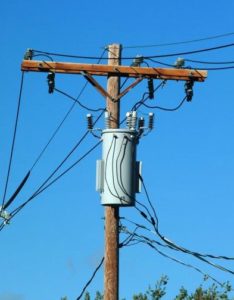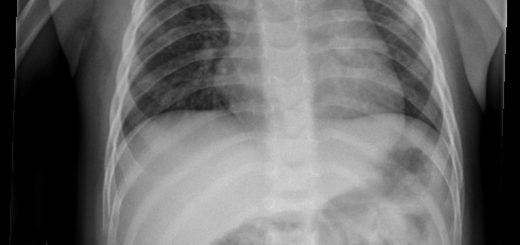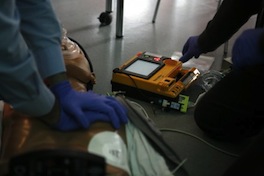A guide to lightning and electrical injuries for first aiders
In this first aid blog post we explain some of the science behind electrical injuries and the different patterns of injuries that occur.
The overall outcome of an electric shock to an individual depends on the intensity of the voltage to which the person was exposed, the route of the current through the body, the victim’s state of health, and the speed and adequacy of the treatment, the effect of exposure can range from a mild tingling sensation to cardiac arrest.
How does electricity cause injuries?
Electric current can cause injury in three main ways:
- Cardiac arrest due to the electrical effect on the heart or respiratory arrest caused by muscle spasm preventing breathing;
- Muscle, nerve, and tissue destruction from a current passing through the body. The skin is often charred and these wound typically have entry and exit wounds. These patients should be assumed to have injuries to the nerves, bones, muscles, blood vessels and other organs along the pathway between the entry and exit points;
- Thermal burns from contact and arcing with the electrical source. Contact burns occur when electrical current passes through a metallic object and causes the metal to become superheated. This object may slice through tissue and can result in very deep burns. With arcing injuries the skin can be exposed to temperatures of 2500C to 3000C producing serious burns. These injuries are typically superficial and can be recognised by the loss of singing of hair along the pathway. Deep injuries may be present, especially at joints, as the electricity jumps from one body part to another.
High-voltage direct current (DC) tends to cause a single muscle spasm, often throwing the victim from the source, resulting in a shorter duration of exposure but increasing the likelihood of injuries as the result of the fall.
Alternating current (AC) is generally more dangerous than direct current of the same voltage because continuous muscle contraction occurs as a result of the electricity, often causing the hand, for example, to grip the electrical current, increasing the duration of the exposure.
Nerves, designed to carry electrical signals, and muscle and blood vessels, because of their high electrolyte and water content, are good conductors. Bone, tendon, and fat have a very high resistance and tend to heat up and coagulate rather than transmit current.
Skin is the primary resistor to the flow of current into the body. Much of the energy may be dissipated at the skin surface, causing significant surface burns in a heavily calloused area, sometimes resulting in less deep internal damage than would be expected if the current were delivered undiminished to the deep tissues.
Sweating can decrease the skin’s electrical resistance and immersion in water can reduce this further, allowing more energy to flow through the body, which can result in cardiac arrest without any surface burns.
In general, the longer the duration of contact with high voltage current, the greater the degree of tissue destruction. Although there is an extraordinarily high voltage and amperage with lightning, the extremely short duration and the physics of lightning result in a very short flow of current internally, with little, if any, skin breakdown and almost immediate flashover of current around the body, usually resulting in little, if any, burning of tissues.
High vs Low voltage injuries
Voltage is a measure of potential difference between two points. It is determined by the electrical source.
Electrical injuries are conventionally divided into high or low voltage using 500 or 1000 volts as the most common dividing lines. Although both high and low voltage can cause significant morbidity and mortality, high voltage has a greater potential for tissue destruction and can be responsible for severe injuries leading to major amputations and tissue loss.
High-voltage electrical injuries may be devastating, with extensive burns, cardiac arrest, amputations, and long, complicated hospitalizations.
Low voltage usually follows the path of least resistance in and through the body, primarily through blood vessels, nerves and muscles. Exposure to low voltages are more likely to result in ventricular fibrillation (VF), compared to contact with high voltage which usually produces asystole as it takes the shortest distance to the ground.
Electrocution from higher voltage sources, such as generators used on building sites, may cause cardiac arrhythmias after a period of apparent full recovery.
In lightning injury, cardiac arrest is the main cause of death, burns tend to be superficial, and injuries often are what one would expect of short-circuiting or overloading the body’s electrical systems (tinnitus, blindness, confusion, amnesia, cardiac arrhythmias, and vascular instability).
First aid for electrical injuries
We have a separate blog post covering the first aid treatment of electrical injuries and burns.







